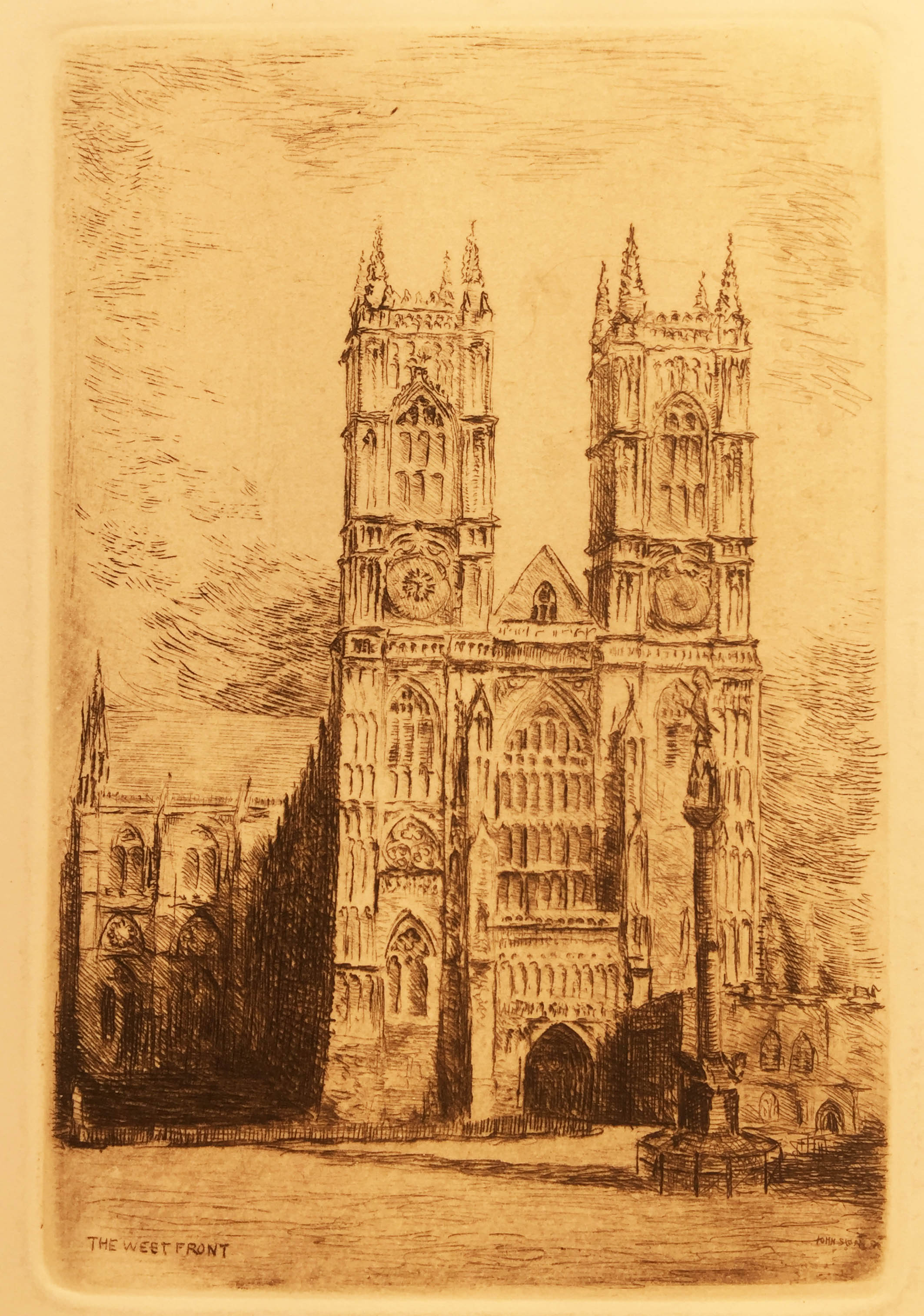
John Sloan
The West Front
Etching, 1891.
From set of 13 etchings: Westminster Abbey, c. 1891.
Printed by Peters Brothers; published by A. Edward Newton.
Image: 4 3/4 x 3 1/8″
Paper: 10 x 7 7/8″
Good condition; slight soiling and foxing near margin edges.
Inventory Number: 10416
Signed in plate.
Westminster Abbey from the west front side in dark brown or sepia ink on heavy wove paper.
A leader of The Eight, John Sloan was born in Lock Haven, Pennsylvania. Sloan grew up in Philadelphia, where he studied briefly at the Pennsylvania Academy of the Fine Arts, and in 1892 joined the art staff of the Philadelphia Inquirer. That year he met Robert Henri, who would become his life-long friend and inspire him to become a painter. Among his fellow newspaper artists in Philadelphia were William Glackens, George Luks, and Everett Shinn. In 1904 Sloan and Dolly, his wife of three years, moved to New York, where he continued to work as an illustrator and became increasingly interested in depicting city life and city scenes. He participated in many major exhibitions such as “The Eight” in 1908, the Exhibition of Independent Artists in 1910, the 1913 Armory Show, and the first show of the Society of Independent Artists in 1917.
In 1910 Sloan joined the Socialist Party and contributed illustrations to its publications, notably the magazine The Masses. With the advent of World War I he resigned from the party. About the same time he began spending summers away from the city, first at Gloucester, Massachusetts (1914–1919), and then in Santa Fe (from 1919). In 1916 he had his first one-person exhibition (at the Whitney Studio), began his association with Kraushaar Galleries, and started teaching at the Art Students League. He became president of the Society of Independent Artists in 1918, a post he held until 1944.
It was probably due to Sloan’s paintings, which favored a dark palette and scenes of the gritty side of urban life in turn-of-the-century New York City, that the Eight was later dubbed the “Ashcan School.” Sloan’s subjects are voyeuristic, a spectator of the human dramas he glimpsed in the streets and tenements of New York. Duncan Phillips further noted in A Collection in the Making, that Sloan was a “…sympathetic and understanding observer of class consciousness, crowd psychology and the bitter ironies of life.” One of America’s most revered artists in his later years, Sloan continued to paint, etch, and experiment with new printing techniques, until his death in 1951.

